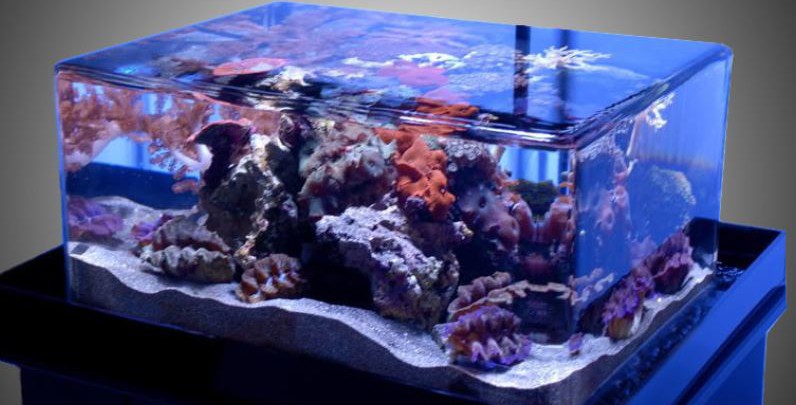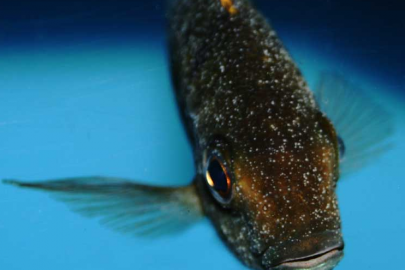Aquarium Buying Guide – What You Need to Know
Buying an aquarium is a commitment which should be approached with careful thought and consideration. While aquarium keeping is considered to be an enjoyable hobby by many, it is always best to purchase the largest tank you can afford when you first begin. This will help you to avoid the need to upgrade later on; after your fish have already been established. Keep in mind, when purchasing an aquarium that you will also need the correct equipment to go along with the actual tank including a heater, filter and lighting to correspond with the size tank you purchase. A sufficiently large tank is necessary as your fish will be happier and healthier when they have adequate room to exercise.
Aquarium Buying Guide – Size and shape of the aquarium
Today, many different shape and height of tanks are available, so some thought will need to be given to this as well. Ideally, it is best not to purchase a tank that is deeper than your arm length or you could face difficult maintenance issues. Generally speaking, standard rectangle and bow-fronted aquariums are more suitable as these types of tanks provide the largest surface area in relation to their volume. As a result they provide maximum length for your fish to swim and exercise in. While tall column tanks can be visually interesting, they do make maintenance difficult. In addition, due to the small surface area, in the event of a power shortage, your fish can suffocate. Other options include cylindrical and spherical tanks; however, these types of tanks tend to distort the fish for viewing.
Aquarium Buying Guide – Types of aquariums
There are three basic types of aquariums available;-
i) basic glass tanks
ii) complete set-up tanks
iii) Systemized aquariums.
Each has advantages and disadvantages.
i. A basic glass tank is an all-glass tank that is in a word-basic. When purchasing this type of tank you must keep in mind that you will need to purchase everything else needed to complete a fully functioning aquarium separate. This means purchasing the filtration, lighting, thermometer, hood, stand, test kits, heater and more separate. Purchasing these items separately can be more expensive than purchasing a complete set-up; however, it does allow you to purchase exactly what you want.
ii. With a complete set up aquarium, the tank comes with a hood and some equipment and accessories. When purchased this way, you usually get a break on the individual prices. This can be a good option if you are unsure about what you will need when you first start out. Perhaps the only disadvantage is that because the items come together you will not be able to purchase exactly what you want, regardless of manufacturer. In addition, do not allow the term ‘complete set-up’ fool you. You may still need other items such as cleaning equipment, background paper and test kits; which must be purchased separately.
iii. A systemized aquarium has the lighting and filtration already fitted into the tank by the manufacturer. This can take the hassle out of selecting and fitting the equipment; however, if you want to use different equipment or even if you want to upgrade in the future, the process is not that simple. Therefore, you should make sure that the system you choose is appropriate for the type of fish you want to keep when you purchase it. For example, some systemized aquariums are better suited for planted tanks and tropical fish.
Tank position
Regardless of which type of aquarium you choose to purchase, it is important to position your tank where it will be easy to view as well as maintain. It should also be positioned in a location that is near an electric outlet. Try to avoid locations near natural sunlight as this can increase the water temperature as well as doors, which may be loud and distress your fish. Finally, avoid placing your tank near areas close to radiators and fireplaces as this can result in excess heat as well.
Aquarium Buying Guide – Conclusion
By giving proper thought and consideration to the type of tank that will best suit your needs and the needs of your fish for some time to come you can be sure you and your fish will enjoy your new aquarium for a long time.







5 Comments
discusguy
Hi,
If you plan on getting discus in the 32 gallon you can probably get away 4 discus. Reason being the discus grow pretty fast and you want to have enough room for them when they are fully grown. If you have plans of upgrading to a large time in the near future then you can start with 6-7 (2 inch) discus. In addition to the discus I would keep fish that do not grow large. I would go with cory cats, neon tetras, and a few glow light tetras.
Feel free to contact me if you have any other questions.
Thanks
Rob
James Hande
Interested in trying my hand at breeding discus. I have breed angelfish, guppies among others. How many 2″ size discus would you recommend starting with in hopes of getting a mated pair (6, 8 more)? Could they be raised in a 40 gallon breeder or should I wait until I can afford a 75 gallon? What’s the best size tank for the mated pair and young fry (20L, 20H, 29, or 40 breeder)? Any suggestions would be greatly appreciated.
Regards,
Jim
discusguy
Hi Jim,
In my many years of doing this the “magic” number of discus need to get good odds of a breeding pair is – 12 discus.
A 40 gallon breeder tank is too small for 12 (2 inch) discus being that you want to allow 7 gallons per fish. So in a 40 gallon you can safely keep 5-6 fish.
The best size tank for a mated pair with fry is a 20 gal long. Stay away from the high tanks for breeding. 20 gallon long is the best for breeding discus.
You can get good deals on 20 gallon long tanks at Petco when they have their $1 per gallon sale every few months.
Feel free to contact me with any other questions.
Thanks
Rob
James Hande
Thank you Rob!
What size tank would you recommend for fry grow out?
discusguy
Hi,
For Fry grow out the bigger the tank the better. I would recommend 7-10 gallons per fry. 7 Gallons per fry has always worked for me. The fry grow quickly so you need to make sure they have enough room so they don’t get stunted. At first all the fry can go together in a 55-75 gallon tank. But you will need to keep putting them in larger tank or dividing them into groups and putting them in smaller tank.
Thanks
Rob